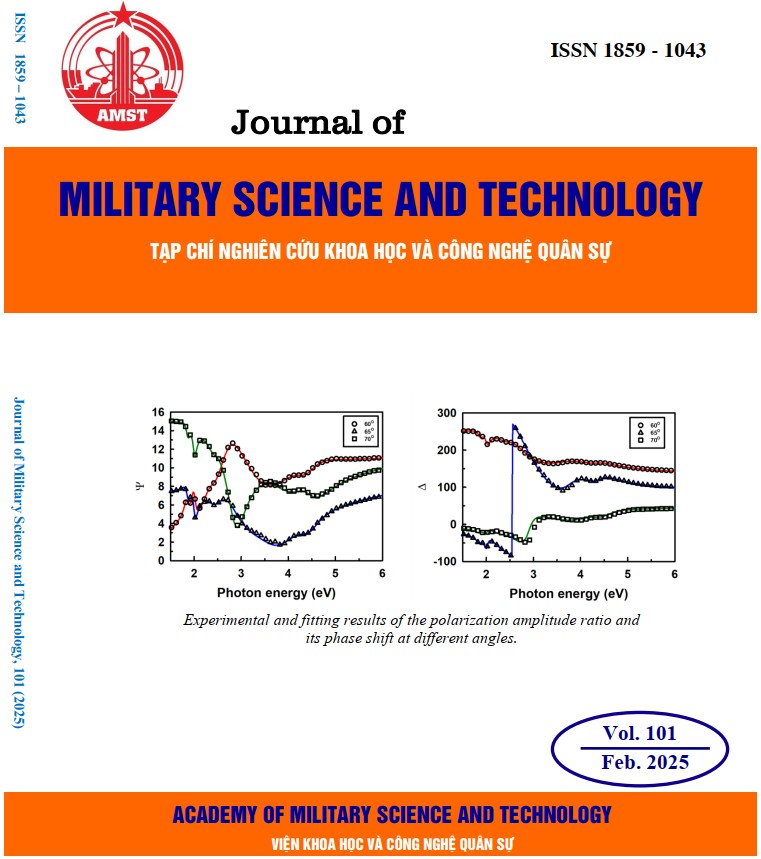A method of profile control applied in laser technology
410 viewsDOI:
https://doi.org/10.54939/1859-1043.j.mst.101.2025.23-31Keywords:
Laser technology; Laser scanner; Laser profile; Galvanometer mirror.Abstract
The proposed model allows the generation of any two-dimensional profile, which can be applied, for example, in laser welding and cutting techniques. In the paper, a system model for generating two-dimensional profiles using two galvanometer mirrors placed on two perpendicular axes is studied and designed. The forward and inverse kinematic equations establishing the relationship between the mirror motion and the laser profile are proposed and thoroughly solved by the author, and the author also presents the control problem to generate the desired profile. Simulations on Matlab are performed for circular and figure-8 profiles. The simulation results obtained profiles similar to the desired profile, both in shape and scanning frequency.
References
[1]. Ion J., “Laser Processing of Engineering Materials: Principles, Procedure and Industrial Application”. Elsevier Butterword-Heinemann (2005). DOI: https://doi.org/10.1016/B978-075066079-2/50009-X
[2]. Padmanabham G., Bathe R., “Laser materials processing for industrial applications”, Proceedings of The National Academy of Sciences, India Section A: Physical Sciences, 88, pp.359-374, (2018). DOI: https://doi.org/10.1007/s40010-018-0523-5
[3]. Katayama S., “Handbook of Laser Welding Technologies”. Woodhead Publishing, (2013). DOI: https://doi.org/10.1533/9780857098771
[4]. Bùi Ngọc Can, Nguyễn Thị Thái Huyền et al, “Nghiên cứu giải thuật máy cắt ống laser”, Hội nghị toàn quốc về Cơ Điện tử (2016) (in Vietnamese).
[5]. Phan Thị Cảnh, Nguyễn Tuấn Anh et al, “Nghiên cứu chế tạo bộ quét chùm tia cho thiết bị laser điều trị thẩm mỹ vi điểm”, Tạp chí Khoa học kỹ thuật và công nghệ, số 65(8), pp.29-34, (2023) (in Vietnamese).
[6]. Chen Wei et al, “A compact two dimensional laser scanner based on piezoelectric actuators”, Review scientific instruments, Vol. 86, Iss. 1 (2015). DOI: https://doi.org/10.1063/1.4904974
[7]. Lei Wang, Ming Gao et al, “Effect of beam oscillating pattern on weld characterization of laser welding of AA6061-T6 aluminum alloy”, Elsevier: Materials & Design, Vol. 108 (2016), pp. 707-717. DOI: https://doi.org/10.1016/j.matdes.2016.07.053
[8]. Rolf Klein, “Laser welding of plastics”, Wiley-VCH, (2012). DOI: https://doi.org/10.1002/9783527636969
[9]. Pengfei Wang, et al, “Laser welding dissimilar materials of aluminum to steel: an overview”, The International Journal of Advanced Manufacturing Technology, pp. 3081–3090, (2016). DOI: https://doi.org/10.1007/s00170-016-8725-y
[10]. Mnerie C.A., Preitl S., Duma V.-F. "Classical PID versus predictive control solutions for a galvanometer-based scanner", In Proceedings of the 2015 IEEE 10th Jubilee International Symposium on Applied Computational Intelligence and Informatics, pp. 349–353, (2015). DOI: https://doi.org/10.1109/SACI.2015.7208227
[11]. Marshall, G.; Stutz, G. “Handbook of Optical and Laser Scanning”, 2nd ed.; CRC Press: Boca Raton, FL, USA, (2011). DOI: https://doi.org/10.1201/b11090
[12]. Guangsheng Chen, Yunlong Wang, “Control of a Digital Galvanometer Scanner Using a Discrete-Time Sliding-Mode Variable-Structure Controller Based on a Decoupled Disturbance Compensator”, Mdpi: Applied sciences, Vol. 11, Iss. 21 (2021). DOI: https://doi.org/10.3390/app11219788
[13]. Đặng Minh Phụng et al, "Phát triển thiết kế và chế tạo máy khắc CNC laser CO2 4 trục ứng dụng khắc bề mặt gỗ, mica, dưa hấu và các chi tiết có bề mặt tròn xoay", Tạp chí Khoa học giáo dục kỹ thuật, số 66 (2021) (in Vietnamese). DOI: https://doi.org/10.54644/jte.66.2021.1063







